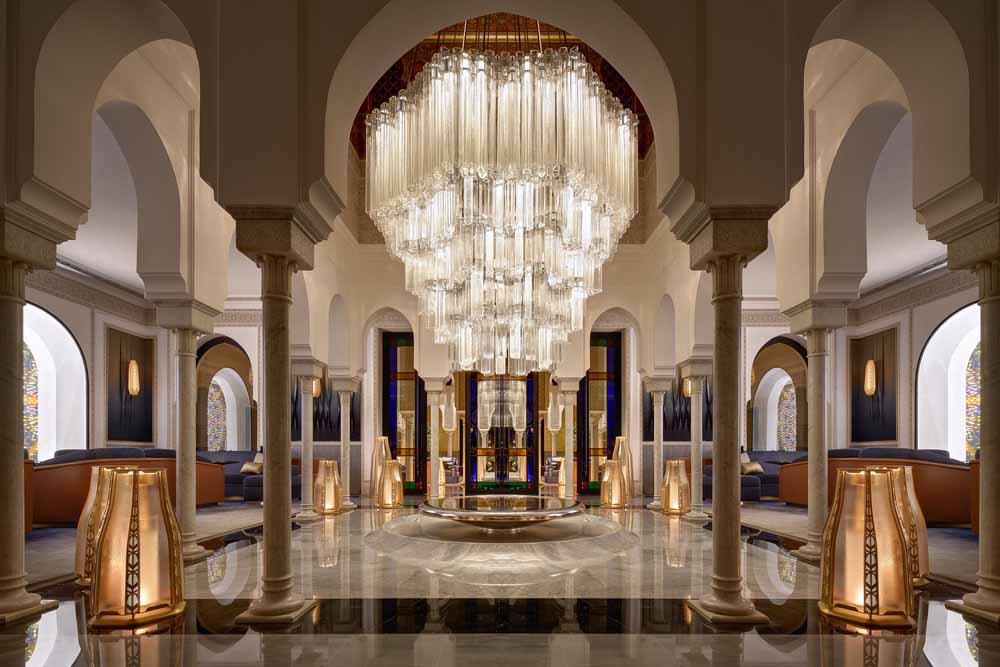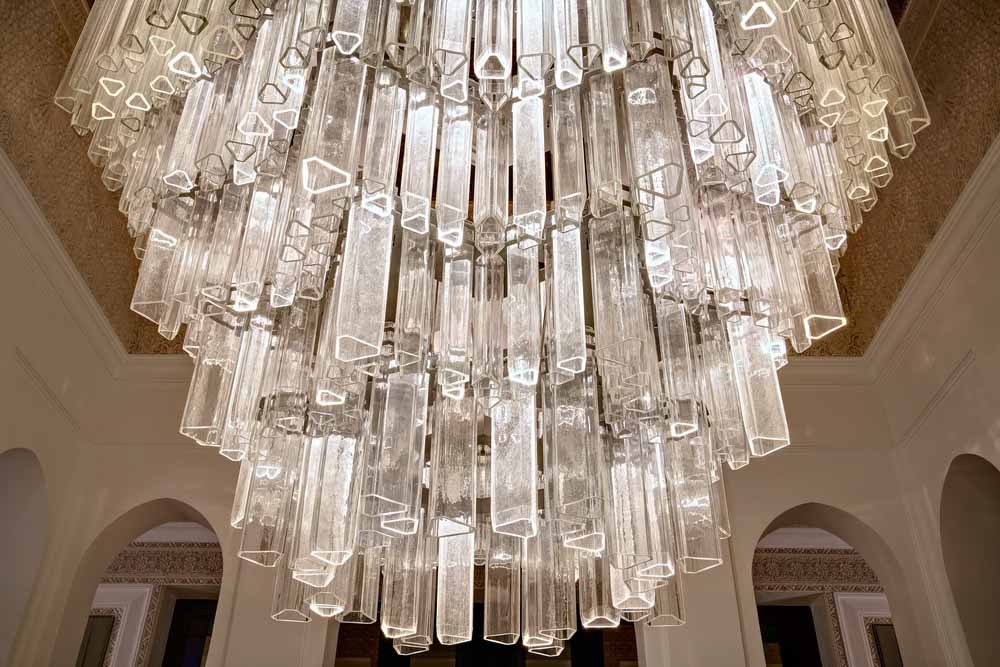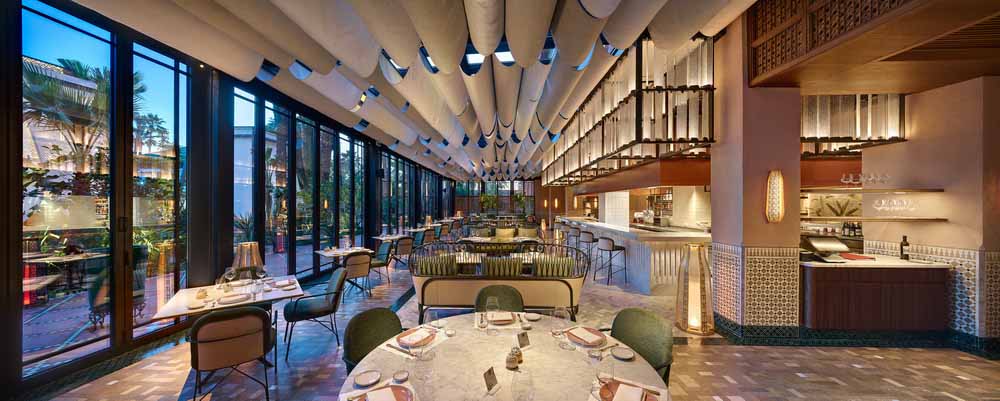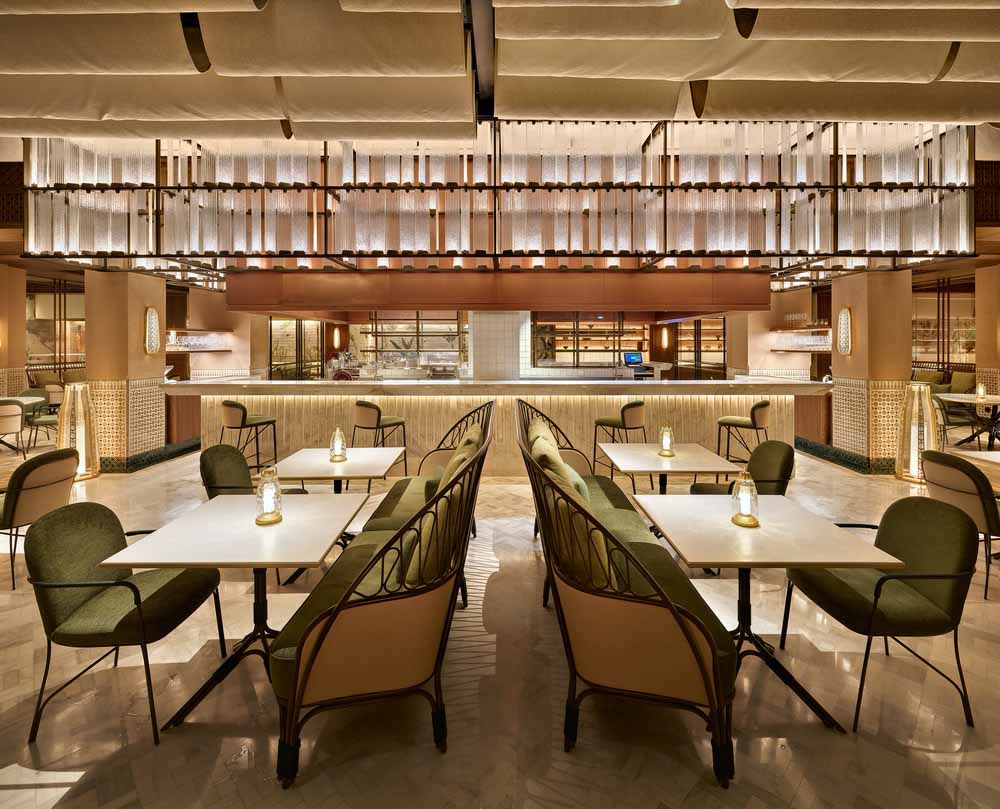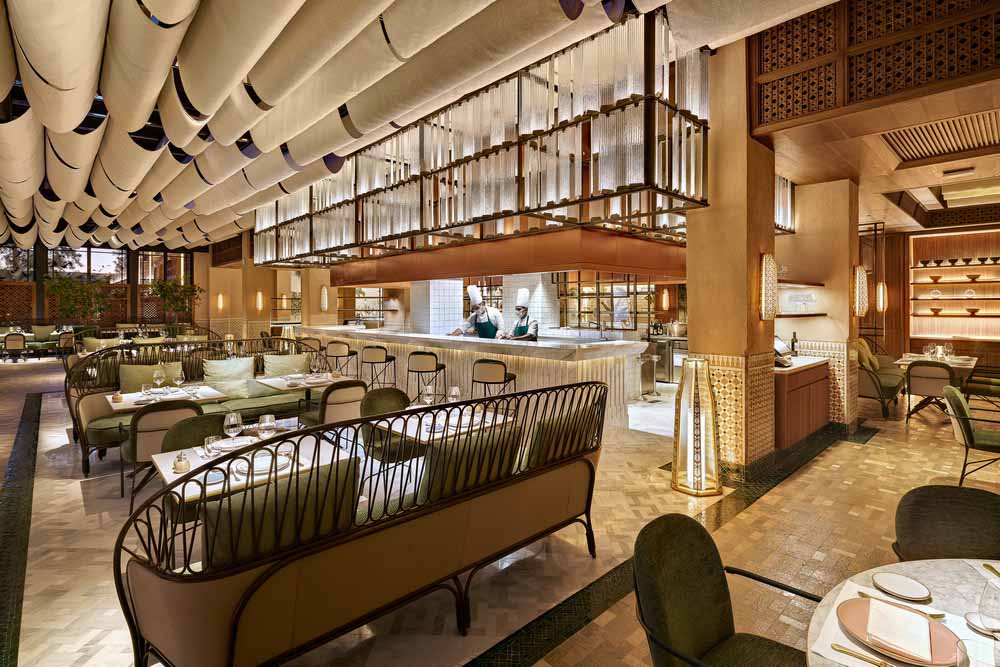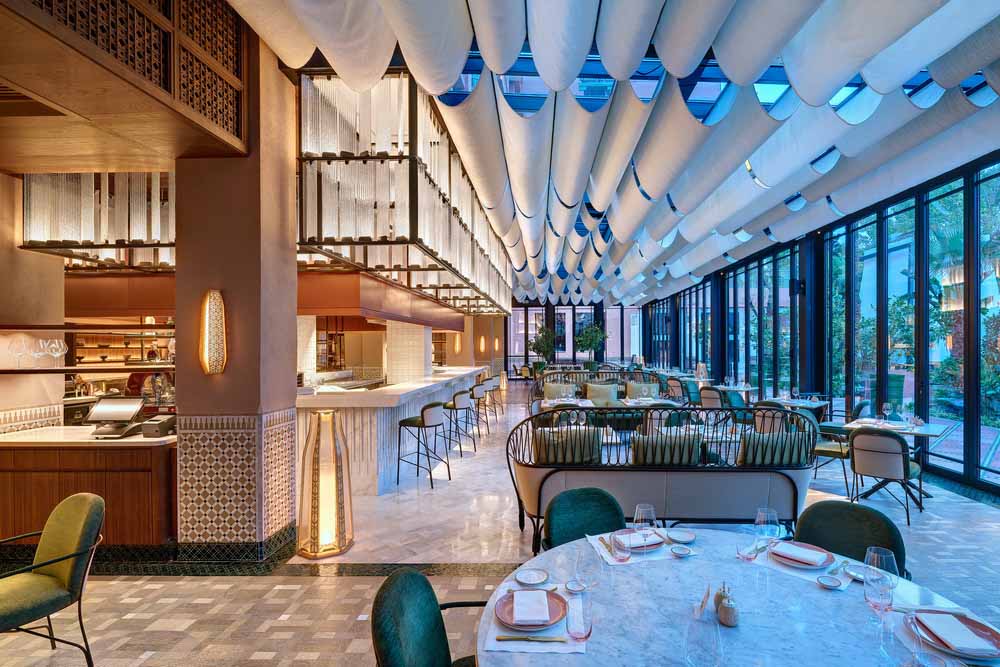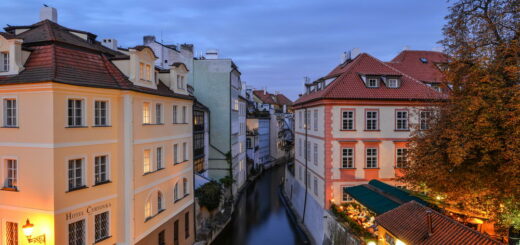Two major installations by LASVIT cast their light in one of the world’s most beautiful hotels
The La Mamounia Hotel in Marrakesh is considered an oasis of calm in the middle of the Moroccan desert and one of the most beautiful and renown hotels in the world. For its near-100th birthday, La Mamounia has decided to refresh its interior, which is now complete for two brand-new installations made by Czech-based designer and manufacturer LASVIT, paying tribute to traditional Moroccan architecture and bringing a breath of fresh air to the luxurious space.
The interior of La Mamounia (otherwise known as the Grande Dame) now shines brighter than ever before. The legendary hotel, which Winston Churchill called “the most beautiful place in the world,” is hidden in the secret niche of a courtyard adorned with columns and Moorish friezes, ancient olive trees, rose gardens, orange trees and thousands of other plant species. The hotel stands among 8 hectares of gardens, which were given as a royal wedding gift to Prince Mamoun in the 18th century. In 1923, the oasis was transformed into the La Mamounia Hotel, which combined Arabic and Andalusian architecture with Art Deco influences.
The Paris-based interior designers Jouin Manku, who were responsible for the hotel’s entire renovation, teamed up with LASVIT to execute their idea with Bohemian perfection. Together they created two unique gems that illuminate the Tea Room and the Italian Restaurant, both located in the very heart of the hotel complex.
A tribute to Moroccan architecture and European culture
The first of the lighting installations – a monumental crystal chandelier – decorates the Tea Room. It is almost six meters high and almost three metres wide, set above a mirror fountain in the centre of the room, and inspired by the design of traditional Arabic teahouses. The chandelier is composed of hundreds of glass pieces and pays homage to traditional Moroccan architecture. Its shape reflects the symbolic form of Moroccan ornamented vaulting – the so-called muqarnas – which are typical ceiling decorations in Arabic culture. However, the designers turned this muqarna upside down and gave it a modern look. The chandelier’s colour and materials bring a feeling of freshness and brightness to the entire space.
The second installation is located in the Italian restaurant, which has the feel of a greenhouse with large, glazed windows that open up onto the hotel’s lush gardens. The interior resembles a typical Italian trattoria with modern pazazz. Placed right above the open kitchen in the restaurant’s very middle, LASVIT’s installation becomes the star of the show, giving the entire interior an airy feel and a touch of timeless design. The biggest challenge faced by LASVIT when manufacturing this extraordinary installation lay in finding suitable materials which would last forever, even in a turbulent environment dedicated to the preparation of food. The Italian restaurant in the Moroccan hotel fits well with the hotel’s philosophy, which is very multicultural – the Tea Room, for example, draws inspiration from the French confectioner Pierre Hermé, whose macarons, as well as teas, are often considered the best in the world. In addition to the Italian restaurant, there are also the Asian restaurant, and the Churchill Bar designed in a typically British style.
Work of art in times of Covid
Czech glassmakers created both installations in compliance with the original design made by the Jouin Manku studio. In order to execute the idea with maximum precision, they had to come up with a unique pendant and lighting system. “Both installations have an ingenious system of internal lighting. Especially the chandelier in the Tea Room is very complex in this respect, as it combines three different lighting systems with several different types of glass. With this project, we have really pushed the boundaries of lighting design,” says Leon Jakimič, the owner and president of LASVIT.
The project was all the more complicated because it was created in the middle of the pandemic. “We had to coordinate the already technically demanding project as well as its installation remotely via video calls. It was a really big challenge for everyone, but also an interesting experience. I am proud of our team, because we dealt with it all very well,” adds Leon Jakimič.

